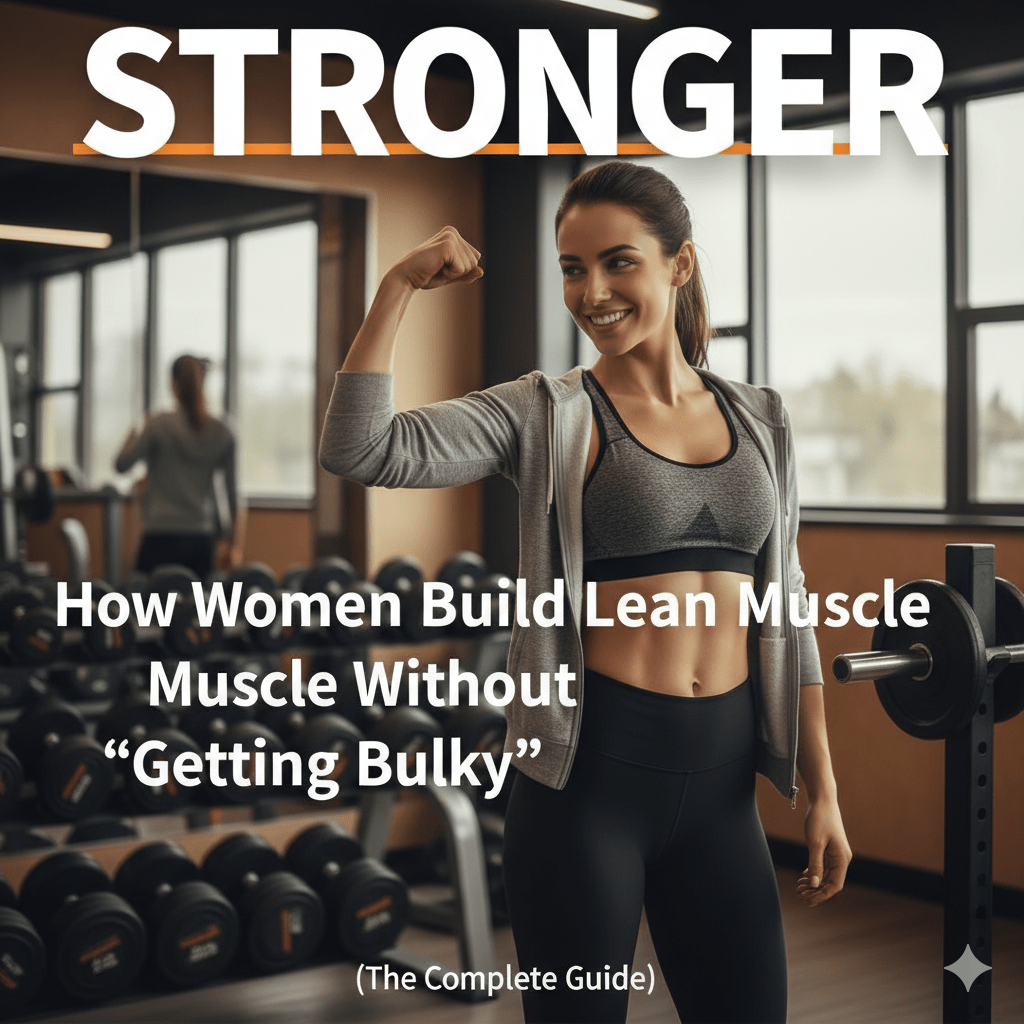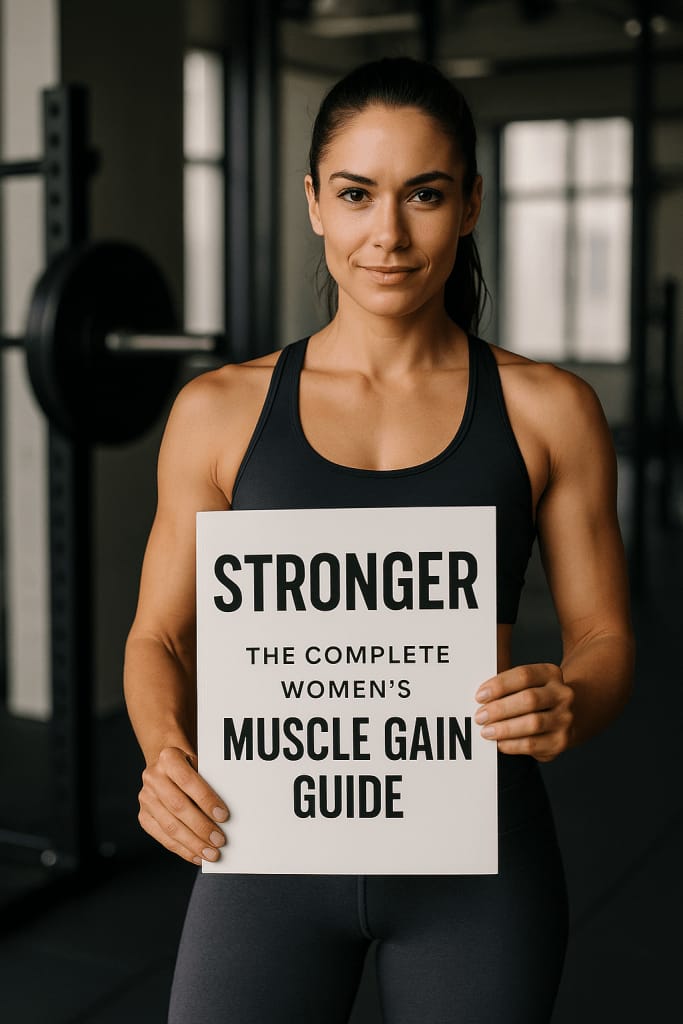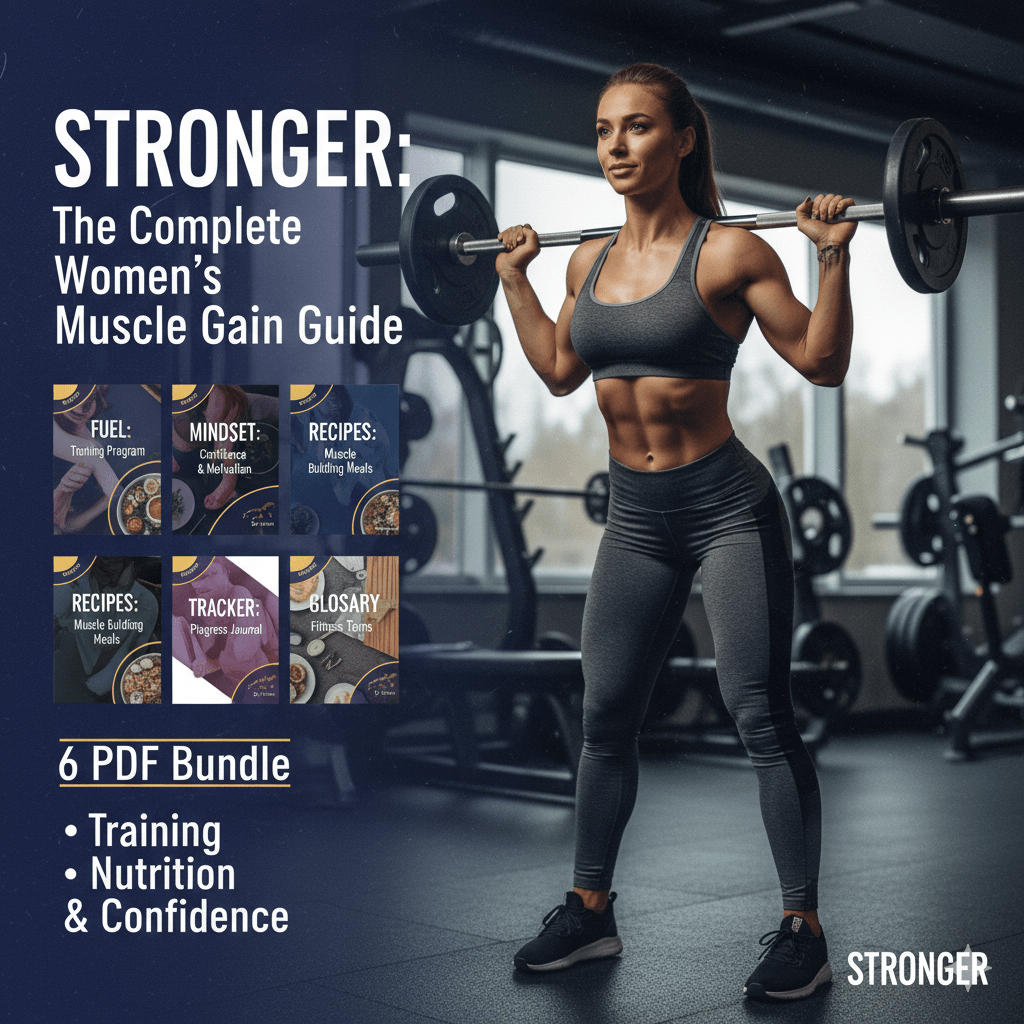- Ark's Newsletter
- Posts
- STRONGER: How Women Build Lean Muscle Without “Getting Bulky” (The Complete Guide)
STRONGER: How Women Build Lean Muscle Without “Getting Bulky” (The Complete Guide)
Short version: Gaining muscle as a woman takes time—you don’t get bulky overnight. It takes consistency, progressive overload, eating enough, hitting your protein, and real recovery. From 42–43 kg last July to 52 kg today and 24 kg skeletal muscle, I’ve never felt stronger or more confident. Strong looks different on everyone. Own your version of it.

If you’re ready for a step-by-step plan, grab the 6-PDF bundle here: Buy STRONGER on Payhip →
Why this guide?
Women are told to “tone” with light weights and endless cardio. Science says otherwise. Muscle grows slowly; it’s shaped by your training and nutrition, and it makes everyday life better: more strength, better posture, fewer aches, and higher confidence. You don’t need a perfect routine—just a smart one you can repeat.
What actually builds muscle? (Evidence in plain English)
1) Train hard with a plan.Research-backed guidelines emphasize multi-set programs, mostly 6–12 reps, and adding weight/reps over time. Two to four training days/week is plenty for most lifters.
2) Eat enough protein—and spread it out.A daily target of about 1.6–2.2 g/kg bodyweight, distributed at roughly 0.4–0.55 g/kg per meal across 3–5 meals, supports muscle protein synthesis.
3) Use a small calorie surplus.To gain mostly lean tissue, aim for a gradual scale increase (≈0.25–0.5% BW per week) and adjust calories if weight stalls for 2+ weeks. (This rate is consistent with off-season physique nutrition practice and hypertrophy research on volume and effort near failure.)
4) Recovery matters.Sleep, deload weeks, and managing stress let your body adapt to training. (Hypertrophy volume is counted as hard sets close to failure; you must recover from those.)
5) Female physiology ≠ fragile.On average, performance changes across the menstrual cycle are trivial to small; adjust by feel using RPE (auto-regulation), but keep training.
6) Supplements are optional.Creatine monohydrate (3–5 g/day) is well-studied and generally safe; results in women are mixed for performance but favorable for lean mass over time. Expect a little water retention early on—that’s normal.

The simple framework (so you stop second-guessing)
Training: 3–4 days/week, 45–70 min
Big rocks: squat, hinge, push, pull, lunge, carry, and core.
Rep ranges: mostly 8–12, with some 6–8 for strength and 12–15 for accessories.
Progress: When you hit the top of a rep range on all sets with great form, add 2–5% load next time or add 1–2 reps.
Deload: Every 4–6 hard weeks, reduce sets by ~30–40% and train easier (RPE 6–7).
Sample 4-Day Split
Day 1—Lower A: Back squat, RDL, split squat, leg curl, calf raise, plank
Day 2—Upper A: Bench press, chest-supported row, overhead press, lat pulldown, lateral raise, curls
Day 3—Lower B: Hip thrust, leg press, back extension, leg extension, calf raise, Pallof press
Day 4—Upper B: Incline DB press, one-arm row, Arnold press, face pull, pulldown, triceps pressdown
Want it formatted, printable, and periodized for 12 weeks? It’s in the bundle: Get the plan on Payhip →
Nutrition for lean gains (no math degree required)
Step 1: Protein.
Start at 1.6–2.2 g/kg/day.
Hit 0.4–0.55 g/kg per meal across 3–5 meals for best effect.
Step 2: Calories.
Add a small surplus (often 150–300 kcal/day to start).
Track weight weekly. If it hasn’t budged for 2 weeks, add 150–200 kcal; if it jumps too fast, pull 150–200 kcal. (Target ≈0.25–0.5% BW/week.)
Step 3: Carbs & fats.
Carbs fuel those 8–12 rep sets—include a carb source pre/post workout.
Keep fats moderate for satiety and hormone support (roughly 0.6–1.0 g/kg works for many).
Step 4: Hydration & fiber.
30–35 ml/kg/day as a starting point; fiber 25–35 g/day.

Women-specific notes (the honest version)
Cycle considerations: Some notice slightly lower oomph during the early follicular phase; others feel strongest mid-cycle. Adjust load/sets by feel, not fear. The average effect is small.
Creatine & “bloat”: Early water retention inside the muscle is common (especially with loading); it’s temporary and harmless. You can skip the loading phase and take 3–5 g/day.
Busy schedule? Three quality sessions beat six scattered ones. Consistency > perfection.
Myths to delete
“Lifting makes women bulky.” Muscle accrues slowly; your calorie intake, not the barbell alone, drives size. (Hypertrophy happens across a range of loads if you train close to failure.)
“Light weights tone; heavy weights bulk.” It’s about effort and progression.
“You must train daily.” Not true—2–4 days can be optimal for many.
Exactly how to start this week
Pick 3–4 days you can actually keep.
Choose 5–6 movements per session (one squat + one hinge + one push + one pull + accessory + core).
Log your lifts and add a little each week when the top of the rep range feels solid.
Eat for growth: protein at each meal, small surplus, adjust every 2 weeks.
Sleep 7–9 hours and schedule one lighter week every 4–6 weeks.
Prefer it all done for you? The STRONGER bundle includes the 12-week plan, nutrition cheat sheet, meal-prep templates, printable trackers, and FAQs so you can open, follow, and grow.
FAQs
Will I get bulky?No. Muscle builds slowly. If you keep the surplus small and train smart, you’ll add shape and strength without the “overnight bulk” myth.
How much protein do I really need?Most women do great at 1.6–2.2 g/kg/day, split over 3–5 meals (≈0.4–0.55 g/kg each).
Do I have to train 6 days/week?No—3–4 days with progressive overload beats scattered daily workouts.
Is creatine safe for women?Creatine monohydrate is generally safe, with mixed but promising outcomes in women; mild water retention can occur. Start with 3–5 g/day.
What about my menstrual cycle?Average performance differences across phases are small. Adjust by RPE; don’t stop training.
Final word
You won’t wake up bulky. You will wake up prouder every week you show up, eat enough, and add a little more weight or one more rep. Strong looks different on everyone. Own your version of it.
→ Ready to start? Get STRONGER: The Complete Women’s Muscle Gain Guide (6 PDF Bundle).
Must-Have Fitness Tools for Every Woman Who Works Out
When it comes to building strength and staying consistent, a few smart tools can make all the difference. Two of the best all-round essentials are the Heavy Resistance Band Set and the Home Gym Workout Kit. The resistance band set offers durable, high-tension bands perfect for glute activation, squats, presses, and mobility warm-ups—ideal for home or travel. Meanwhile, the home gym kit turns any space into a mini gym, with resistance tubes, handles, ankle straps, and a door anchor that let you train your entire body without bulky equipment. Whether you’re new to lifting or supplementing your gym routine, both are compact, affordable, and incredibly effective additions to every woman’s fitness toolkit.